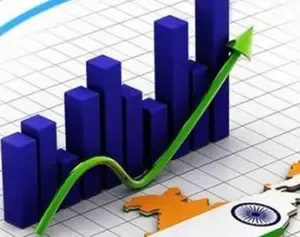RBI's Monetary Policy Decisions Aim to Strengthen Domestic Growth Amidst Global Economic Challenges: CII

Synopsis
Key Takeaways
- RBI's rate cut supports economic growth.
- Shift to accommodative policy stance is beneficial.
- Focus on consumer and investment stimulation.
- High real interest rates necessitate further cuts.
- Central Bank remains vigilant about inflation risks.
New Delhi, April 9 (NationPress) The Reserve Bank of India’s (RBI) supportive monetary strategy, along with the government's development-focused fiscal measures, is poised to enhance domestic growth in the face of global economic challenges, as stated by the Confederation of Indian Industry (CII) on Wednesday.
Describing the central bank's choice to maintain the rate reduction trend by lowering the repo rate by 25 basis points to 6.0 percent as "well-timed and sensible," Chandrajit Banerjee, Director General of CII, noted that this rate cut, together with the shift in monetary policy stance from 'neutral' to 'accommodative,' represents a significant positive development.
"This adjustment, which CII has consistently championed, strongly highlights the Central Bank's pro-growth stance while remaining attentive to the inflation outlook,” Banerjee remarked in a statement.
The RBI’s decision to cut rates and adjust its stance reflects worries about the repercussions of slower global growth on domestic economic expansion and a relatively stable outlook for domestic inflation.
Furthermore, with the real interest rates still elevated at 2.6 percent following the February rate cut, the apex industry body emphasized the urgent necessity for further reductions to stimulate investment demand.
The advantages of this rate reduction are expected to be immediately transferred to consumers, which is vital for enhancing consumption. Lower borrowing costs will also support housing affordability.
RBI Governor Sanjay Malhotra mentioned that the repo rate cut decision was made unanimously by the Monetary Policy Committee (MPC) while considering the macroeconomic and financial conditions and forecasts.
Additionally, the RBI Governor noted that while inflation has decreased within the Indian economy, the central bank will remain alert due to global risks stemming from US tariff increases. He assured that the RBI will maintain sufficient liquidity in the banking system.
This marks the second consecutive 25 basis point reduction in the repo rate, following a decrease in February, the first since May 2020. A lower policy rate results in reduced interest rates on bank loans, facilitating easier borrowing for consumers and businesses, thereby boosting consumption and investment in the economy and driving higher growth.









